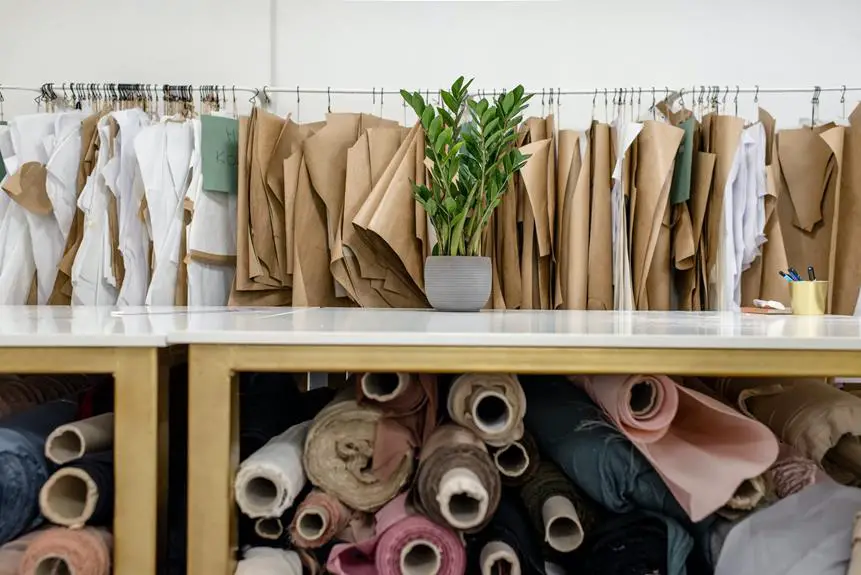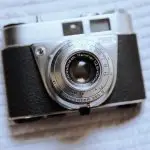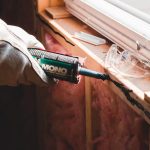Do you know that Tear Mender Fabric Glue has a customer satisfaction rate of over 90%?
If you're considering this popular fabric adhesive, it's crucial to weigh the hype against its actual performance.
In this evaluation, we'll delve into the strengths and weaknesses of Tear Mender, compare it with other fabric glues, and provide valuable tips for optimal usage.
By the end, you'll have a well-rounded understanding to make an informed decision on whether Tear Mender lives up to its acclaim.
Key Takeaways
- Tear Mender Fabric Glue offers a long-lasting and flexible bond that holds up well over time, making it a reliable choice for fabric repairs.
- It is versatile and suitable for a wide range of fabric types, including cotton, denim, polyester, and canvas.
- Tear Mender provides a quick and easy solution for fabric repairs, saving time and money on frequent repairs.
- While it has a relatively long drying time compared to some competitors and is not recommended for use on leather materials, Tear Mender stands out for its ability to bond different types of fabrics, offering durability and effectiveness in various applications.
What Is Tear Mender Fabric Glue
If you're wondering what Tear Mender Fabric Glue is, it's a versatile adhesive that has been gaining popularity among DIY enthusiasts and professionals alike. Its effectiveness lies in its ability to mend tears and fabric damage with ease. Unlike traditional adhesives, Tear Mender offers a unique formula that bonds quickly and provides a flexible, long-lasting hold. This makes it an ideal choice for a wide range of fabric repair projects, from clothing and upholstery to outdoor gear and accessories.
When comparing Tear Mender to alternative adhesives, its strength and durability stand out. Unlike sewing, Tear Mender offers a quick and efficient solution without the need for needles and thread. Additionally, it provides a reliable alternative to traditional fabric glues, which often stiffen the fabric or don't hold up well over time.
Strengths of Tear Mender Fabric Glue
You'll be pleased to know that Tear Mender Fabric Glue offers a long-lasting bond that holds up well over time.
Its versatility makes it suitable for a wide range of fabric types, giving you the flexibility to use it for various projects.
With these strengths, Tear Mender Fabric Glue proves to be a reliable choice for your fabric adhesive needs.
Long-Lasting Bond
For a bond that stands the test of time, Tear Mender Fabric Glue is the reliable choice. Its long-lasting durability and exceptional adhesive strength make it a standout option for all your fabric bonding needs.
The unique formula of Tear Mender creates a flexible and resilient bond that can withstand repeated washings and extreme conditions without weakening. This means that once you apply Tear Mender Fabric Glue, you can have confidence in the longevity of the bond.
Whether you're repairing outdoor gear, upholstery, or clothing, Tear Mender's ability to maintain a strong and durable bond over time is unparalleled. This strength and durability not only save you time and money on frequent repairs but also ensure that your fabric projects remain intact for the long haul.
Versatile Fabric Adhesive
When crafting or mending fabric items, you need a versatile adhesive that can handle a variety of materials and applications, and Tear Mender Fabric Glue excels in meeting these demands. This fabric glue offers remarkable strengths for fabric repair and DIY projects, making it a valuable tool for various applications.
- Compatibility: Tear Mender Fabric Glue works effectively on a wide range of fabrics, such as cotton, denim, leather, and more. It provides a reliable bond on both natural and synthetic fabrics, allowing for seamless repairs and creations.
- Versatility: Whether you're patching up a tear in your favorite jeans or working on a complex DIY project, this adhesive proves to be highly versatile. Its ability to bond different types of fabric together makes it a go-to choice for various crafting and repair needs.
Weaknesses of Tear Mender Fabric Glue
When considering Tear Mender Fabric Glue, it's important to be aware of its weaknesses.
One potential concern is its drying time, which may not be suitable for projects requiring quick results.
Additionally, it's important to note that Tear Mender Fabric Glue isn't recommended for use on leather materials.
Drying Time Concerns
Have you ever struggled with the extended drying time of Tear Mender Fabric Glue?
One of the weaknesses of Tear Mender Fabric Glue is its relatively long drying time compared to some of its competitors. This can be a concern, especially when you need a quick repair.
When evaluating the drying time of Tear Mender Fabric Glue, consider the following:
- Effectiveness vs Competitors
- Some users have reported that Tear Mender Fabric Glue takes longer to dry compared to other fabric glues on the market. However, it's essential to weigh this against its effectiveness in providing a strong and durable bond once fully dried.
When considering Tear Mender Fabric Glue, it's important to weigh the drying time against its effectiveness compared to other fabric glues available.
Not Suitable for Leather
One drawback of Tear Mender Fabric Glue is that it isn't suitable for leather repairs. While this adhesive is highly effective for fabric, it lacks the necessary properties to bond securely with leather materials. The unique composition of leather requires a specialized adhesive to ensure a lasting and durable repair.
If you need to mend leather items, it's essential to explore alternative adhesives specifically designed for leather repair. Some suitable alternatives include leather adhesives or contact cement, which are formulated to create strong and flexible bonds on leather surfaces.
It's important to acknowledge this limitation and consider the specific material requirements when choosing the appropriate adhesive for your repair projects. By understanding the strengths and limitations of Tear Mender Fabric Glue, you can employ best practices and make informed decisions for your repair needs.
Applications of Tear Mender Fabric Glue
Looking for a versatile fabric glue that can handle a variety of materials and applications? Tear Mender Fabric Glue offers a wide range of applications, making it a valuable addition to any crafting or repair kit.
Here are some key ways in which Tear Mender Fabric Glue can be effectively utilized:
- Textiles: Tear Mender is highly effective for bonding various textiles, including cotton, denim, polyester, and canvas. Whether it's repairing a torn seam or reattaching a patch, this glue offers durability and effectiveness across different fabric types.
- *Benefits*: Tear Mender provides a quick and easy solution for fabric repairs, saving both time and money compared to traditional sewing methods.
- *User Experience*: Users report satisfaction with the ease of application and the long-lasting results when using Tear Mender on textiles.
- Outdoor Gear: From repairing camping equipment to fixing outdoor clothing, Tear Mender Fabric Glue demonstrates exceptional durability, making it an ideal adhesive for outdoor gear applications.
- *Alternatives*: When compared to traditional sewing or iron-on patches, Tear Mender offers a reliable alternative for repairing outdoor gear, ensuring a strong bond even in rugged conditions.
When considering the applications, benefits, alternatives, durability, effectiveness, and user experience, Tear Mender Fabric Glue proves to be a versatile and reliable adhesive for various fabric-related needs.
Comparison With Other Fabric Glues
When comparing Tear Mender Fabric Glue with other fabric glues, consider its versatility and durability for various applications.
In a performance analysis, Tear Mender stands out for its ability to bond different types of fabrics, including leather, denim, canvas, and vinyl, making it a versatile choice for a wide range of repair and crafting projects.
Its durability under various conditions, including outdoor use, further sets it apart from many traditional fabric glues.
While some fabric glues may excel in specific areas such as washability or flexibility, Tear Mender's overall performance across different criteria makes it a strong contender in the market.
When compared to other fabric glues, Tear Mender's strong adhesive properties and resistance to wear and tear make it a reliable choice for both temporary fixes and permanent fabric repairs.
As you assess different fabric glues, consider the specific requirements of your project and weigh Tear Mender's versatility and durability against the specialized features of other products to make the best choice for your needs.
Tips for Using Tear Mender Fabric Glue
To achieve optimal results when using Tear Mender fabric glue, carefully preparing the fabric surfaces and applying a thin, even layer of the adhesive is crucial for a strong and durable bond. Here are some tips for using Tear Mender fabric glue:
- Application Techniques:
- Clean the fabric surfaces thoroughly to remove any dirt, oil, or residue that may affect the adhesive's ability to bond.
- Apply a small amount of Tear Mender fabric glue to one side of the fabric and press the two surfaces together firmly. Avoid using too much glue, as this can lead to a messy application and longer drying times.
- Drying Process:
- Allow the glued fabric to dry for at least 3 minutes before joining the surfaces together. For optimal bonding, leave the fabric undisturbed for 15 minutes after joining the surfaces.
- It's recommended to let the fabric sit for 24 hours after applying Tear Mender fabric glue to ensure a strong and durable bond.
Following these application techniques and allowing the proper drying process will help you achieve the best results when using Tear Mender fabric glue.
Customer Reviews and Testimonials
Many customers have praised the effectiveness of Tear Mender fabric glue in repairing various fabric items. Their satisfaction with the product's performance is evident in numerous testimonials and reviews. Customers have reported successful repairs on a wide range of fabric materials, including denim, leather, canvas, and more. The product's effectiveness in bonding fabric and providing durable, long-lasting repairs has garnered positive feedback from users across different fabric repair projects.
Customer satisfaction with Tear Mender fabric glue is consistently highlighted in reviews, with many users expressing their trust in the product for its reliable and strong adhesive properties. Additionally, customers have commended the ease of use, quick drying time, and flexibility of the glue once applied. Many have found the product to be a convenient solution for mending fabric tears, reinforcing seams, and even creating new fabric bonds.
Final Verdict: Is Tear Mender Worth It?
You should consider Tear Mender fabric glue worth the hype if you frequently require reliable and long-lasting fabric repairs. The user experience with Tear Mender is generally positive, with many users praising its strong bonding capabilities and ease of use. However, it's important to weigh the pros and cons before making a decision.
- Pros of Tear Mender:
- Long-lasting and durable fabric repairs
- Versatile and suitable for a wide range of fabrics
- Cons of Tear Mender:
- Can be relatively expensive compared to traditional fabric glues
- Requires precision and care during application
When comparing the cost of Tear Mender to alternative options such as sewing or traditional fabric glues, it's important to consider the longevity and reliability of the repair. While Tear Mender may have a higher upfront cost, its durability often makes it a cost-effective choice in the long run.
Ultimately, the decision of whether Tear Mender is worth it depends on your specific needs and budget. If you prioritize a strong and long-lasting fabric repair solution, and are willing to invest a bit more, Tear Mender could be the ideal choice for you.
Frequently Asked Questions
Is Tear Mender Fabric Glue Safe to Use on All Types of Fabric, Including Delicate or Expensive Materials?
Yes, Tear Mender Fabric Glue is safe for all fabric types, including delicate and expensive materials. It's suitable for outdoor use and heavy-duty repairs. It has a quick drying time and a simple curing process. Proper storage and handling are essential.
Can Tear Mender Fabric Glue Be Used for Outdoor or Heavy-Duty Applications, Such as Repairing Camping Gear or Outdoor Furniture?
For outdoor gear, Tear Mender fabric glue is durable and effective. It's great for heavy-duty applications, making it a reliable choice for repairing camping gear or outdoor furniture. Its strong bond ensures lasting repairs.
How Long Does Tear Mender Fabric Glue Typically Take to Dry and Set, and Is There a Recommended Curing Time Before Using the Repaired Item?
Tear Mender fabric glue typically dries and sets in minutes, with a recommended curing time of 24 hours before using the repaired item. It's suitable for outdoor applications, works on various materials, and requires proper storage consideration.
Are There Any Special Storage or Handling Considerations for Tear Mender Fabric Glue to Ensure Its Longevity and Effectiveness?
When handling Tear Mender Fabric Glue, ensure special storage to maintain its effectiveness and longevity. Proper handling considerations include keeping it tightly sealed and stored in a cool, dry place. Following these guidelines will optimize its performance.
Can Tear Mender Fabric Glue Be Used to Repair Other Materials Besides Fabric, Such as Leather, Rubber, or Plastic?
Yes, Tear Mender fabric glue can effectively repair leather, rubber, and plastic. Its versatility extends beyond fabric, making it a valuable tool for various materials. You'll find Tear Mender's effectiveness in repairing these alternative materials impressive.
- Does Chiffon Fabric Stink - July 15, 2025
- Does Chiffon Fabric Affect the Economy - July 15, 2025
- Does Cotton Fabric Have a Nap - July 15, 2025







